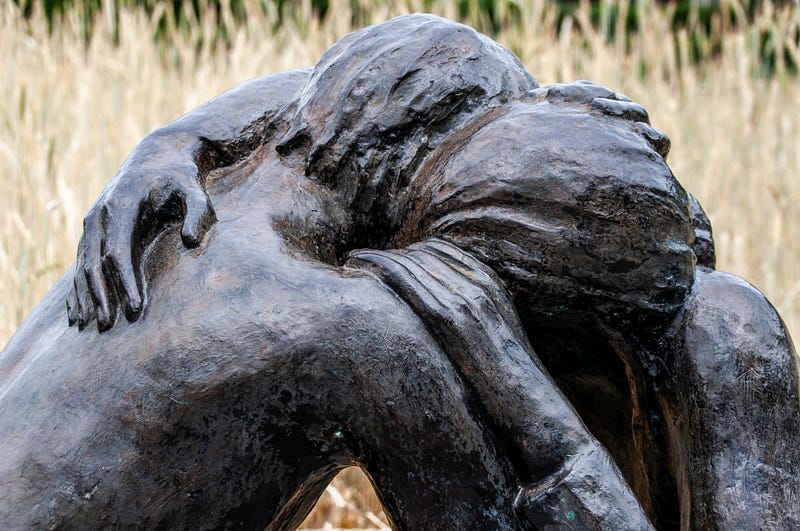Introduction: The Weight of Unforgiveness

Have you ever lain awake at night, replaying the same hurtful memory over and over? Maybe it’s something someone said that cut you deeply, or a betrayal that shook you to your core. It’s like a shadow that follows you everywhere, casting a pall over your joy and peace. The idea of forgiving seems impossible, doesn’t it? How can you forgive what you can’t forget?
You’re not alone in this struggle. Many of us grapple with the concept of forgiveness, especially when the wounds are deep and the scars are still fresh. But here’s the good news: it’s possible to move on, make peace with those painful memories, and create a life that’s beautiful again. This journey isn’t easy, but it’s profoundly transformative. Let’s dive into how you can begin this process.
The Myth of Forgiveness: Addressing Common Misconceptions
Before we embark on this journey together, let’s clear up a few myths about forgiveness. These misconceptions often keep people trapped in their pain, believing that forgiveness is either too lofty a goal or not worth the effort.
Click HERE to get the 2024 New York Times best seller book about FORGIVING
Myth #1: Forgiveness Means Forgetting
One of the most pervasive myths is that forgiving someone means forgetting what they did. This isn’t true. Forgiveness is about finding peace despite remembering. You can let go of the anger and resentment while still acknowledging what happened.
Myth #2: Forgiving is a Sign of Weakness
Some people think that forgiving someone means you’re weak, that you’re letting them off the hook. In reality, forgiveness is a sign of immense strength. It takes courage to let go of grudges and move forward with your life.
Myth #3: You Have to Reconcile to Forgive
Reconciliation and forgiveness are two different things. You can forgive someone without ever speaking to them again. Forgiveness is about your peace, not necessarily about restoring a relationship.

The Emotional Toll of Unforgiveness
Holding on to grudges and refusing to forgive can take a heavy toll on your emotional and physical well-being. Studies have shown that chronic anger and resentment can lead to a host of health issues, including increased stress, anxiety, depression, and even cardiovascular problems.
Click HERE to get the 2024 New York Times best seller book about FORGIVING
But the emotional toll is perhaps the most significant. Unforgiveness traps you in a cycle of bitterness and negativity, preventing you from experiencing true happiness and fulfillment. It’s like carrying a heavy backpack filled with stones — you can’t move freely until you lighten the load.
The Power of Forgiveness: Healing and Freedom
Forgiveness isn’t just about letting go of anger; it’s about reclaiming your life. When you forgive, you free yourself from the grip of the past and open yourself up to new possibilities. Here’s how forgiveness can transform your life:
- Emotional Liberation: Forgiveness releases you from the chains of anger and resentment, allowing you to experience peace and joy.
- Improved Relationships: Letting go of grudges makes room for healthier, more fulfilling relationships.
- Better Health: Reduced stress levels and improved mental health are some of the benefits associated with forgiveness.
- Personal Growth: Forgiveness helps you develop empathy and compassion, making you a stronger and more resilient person.
Step-by-Step Guide to Forgiving What You Can’t Forget
Forgiveness is a journey, not a destination. It’s a process that takes time, effort, and a lot of introspection. Here’s a step-by-step guide to help you on your path to forgiveness.
Step 1: Acknowledge Your Pain
The first step in the forgiveness process is acknowledging your pain. Allow yourself to feel the hurt and anger without judgment. Denying or suppressing your emotions only prolongs the healing process. Write down your feelings in a journal, talk to a trusted friend, or seek professional help if needed. This step is crucial because you can’t heal what you don’t allow yourself to feel.
Step 2: Understand the Impacts
Reflect on how the event has affected your life. How has it influenced your behavior, thoughts, and relationships? Understanding the impact helps you see the broader picture and realize why it’s essential to let go of the pain. It’s not about excusing the behavior but about recognizing how holding onto it is holding you back.
Step 3: Make the Decision to Forgive
Forgiveness starts with a decision. Decide that you no longer want to be defined by the hurtful event. This decision is empowering — it puts you back in control of your life. Remember, you’re not condoning the behavior, but choosing peace over pain.
Click HERE to get the 2024 New York Times best seller book about FORGIVING
Step 4: Seek Empathy
Try to understand the situation from the other person’s perspective. This doesn’t mean you agree with what they did, but empathy can help you see them as a flawed human being rather than a villain. This perspective shift can ease the bitterness and open the door to forgiveness.
Step 5: Release the Grudge
Letting go of a grudge is one of the hardest parts of forgiveness. It’s helpful to use visualization techniques — imagine the grudge as a heavy burden you’re setting down, or write a letter to the person (you don’t have to send it) expressing your feelings and then burn it as a symbolic release.
Step 6: Focus on the Present
Living in the past prevents you from enjoying the present. Practice mindfulness and stay grounded in the here and now. Engage in activities that bring you joy and fulfillment. Surround yourself with positive influences and cultivate new, healthy relationships.
Step 7: Seek Support
Forgiving someone can be an isolating experience if you try to do it alone. Seek support from friends, family, or support groups. Sharing your journey with others who understand can provide comfort and encouragement.
Making Peace with Painful Memories
Making peace with painful memories doesn’t mean erasing them. Instead, it means integrating them into your life in a way that they no longer control you. Here are some strategies to help you make peace with the past:
Reframe the Narrative
Change the story you tell yourself about the event. Instead of seeing yourself as a victim, view yourself as a survivor. Focus on your resilience and the lessons you’ve learned from the experience.
Practice Self-Compassion
Be kind to yourself. Acknowledge that you did the best you could with the information and resources you had at the time. Self-compassion helps you heal and move forward with a sense of peace.
Click HERE to get the 2024 New York Times best seller book about FORGIVING
Create New Memories
Fill your life with positive experiences. Create new memories that bring joy and fulfillment. These new experiences can help overshadow the painful ones and provide a sense of balance in your life.
Creating a Beautiful Life After Forgiveness
Forgiveness is the gateway to a beautiful life. Once you’ve let go of the past, you can fully embrace the present and future. Here are some tips to help you create a life that’s beautiful and fulfilling:
Cultivate Gratitude
Gratitude shifts your focus from what you lack to what you have. Keep a gratitude journal and regularly write down things you’re thankful for. This practice can transform your outlook on life and increase your overall happiness.
Pursue Your Passions
Engage in activities that bring you joy and fulfillment. Whether it’s a hobby, career, or volunteer work, pursuing your passions gives your life meaning and purpose.
Build Positive Relationships
Surround yourself with people who uplift and support you. Nurture relationships that are based on mutual respect and understanding. Positive relationships can greatly enhance your quality of life.
Practice Mindfulness
Mindfulness helps you stay present and fully engage with your life. Practice mindfulness through meditation, deep breathing, or simply being aware of your surroundings. This practice can reduce stress and increase your overall well-being.
Set Goals
Having goals gives you something to strive for and keeps you focused on the future. Set achievable goals for different areas of your life, and take small steps each day to reach them.

Conclusion: Embracing the Journey
Forgiving what you can’t forget is a journey that requires patience, courage, and a lot of self-love. It’s about finding peace within yourself and reclaiming your life from the grip of the past. Remember, forgiveness is not a destination but a process — a series of steps that lead to healing and liberation.
Click HERE to get the 2024 New York Times best seller book about FORGIVING
By acknowledging your pain, understanding the impact, making the decision to forgive, seeking empathy, releasing the grudge, focusing on the present, and seeking support, you can move on from the past and create a life that’s beautiful and fulfilling. Embrace this journey with an open heart and mind, and you’ll discover that forgiveness is the key to a happier, more peaceful life.
You deserve to live a life free from the chains of resentment and pain. You have the power to forgive, heal, and create a beautiful future. Start today, and take that first step towards a brighter tomorrow.






No comments:
Post a Comment